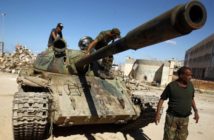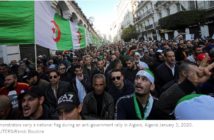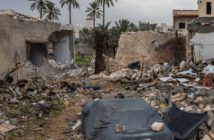
The Arab Spring movement across the Middle East and North Africa will be remembered not by the professional news recordings and photographs of experienced journalists, but rather by the shaky hand held footage and images captured on the mobile phones of those who were not just there to report on events, but actually to take part in them.
This explosion of “user-generated content” (UGC) or “citizen journalism”, readily available to international news agencies willing to transmit these images around the world immediately, heralds an exciting period for international journalism. These organisations are now able to tap into the technology of ordinary citizens for pictures and video footage of events which could not otherwise be covered because direct access is denied either intentionally, indirectly or simply because of impracticality.
However, whilst the advent of UGC has been somewhat revolutionary in opening new avenues for communication, it has also given rise to a number of difficult questions that traditional broadcasters have had to address and it will no doubt influence the future of the media globally.
Accuracy and Authenticity
The principle attraction of UGC, that anyone, anywhere, can capture and upload events as they occur, is also the element that presents the biggest challenge for the media outlets that rely on it. It is critical to remember that the vast majority of submitters are not neutral bystanders or journalists, but individuals with some vested interest in painting one side or another in conflicts, such as those seen during the Arab Spring, as the ‘bad guy’.
During the various revolutions of the movement, the overwhelming bulk of UGC initially appeared from opposition activists, however, pro-government supporters are now starting to fight back with their own content, as seen recently in Syria. Whilst much material is merely slanted to portraying either the regime or revolutionaries in a more favourable or unfavourable light, there also exists other content that has been deliberately fabricated or misrepresented for the public domain.
Some organisations, it seems, are more scrupulous that others in broadcasting material of dubious validity. The BBC appears the organisation that has made the greatest effort to ensure content authenticity, developing a “UGC Hub” to try and do so both as thoroughly and quickly as possible. Methods involve referencing the location of the content against maps and existing footage, ensuring that there are no inconsistencies with regard to language, examining weather reports and shadows and checking weaponry and vehicles with ones known for the relevant region.
The task is not dissimilar to that undertaken by intelligence services across the globe, and local understanding is critical to the process of authentication. This is demonstrated by the example of a BBC News piece that contained independent footage verified to show casualties in a Benghazi hospital by way of their east Libyan accents.
The BBC Trust produced an impartial review into their 2011 coverage of the Arab Spring concluded that its coverage was overall “remarkable given the challenges involved and was generally was impartial”. Even so, the BBC was caught out by an image purportedly from a Syrian activist showing the child victims of the Houla massacre in May 2012 it had used on its website. The picture turned out to have actually been taken by an Italian journalist in Al Musayyib, Iraq, 9 years earlier, with the photographer quickly taking to Facebook to discredit the allegations.
Responsibility
The ethical responsibilities of media outlets have also been thrust back into the spotlight throughout the Arab Spring, primarily insomuch as how they balance their obligation to tell a story without unwittingly playing a part in it? There is a very real fear that atrocities have been committed and filmed precisely for the reasons that they will be shown by news agencies and thereby help shape agendas and viewpoints.
The most extreme example is no doubt the appearance of footage showing Syrian rebel commander, Abu Sakkar, appearing to eat the heart of a government soldier. Whilst the action may seem counterproductive to the rebel aims of attracting international support to their cause, global airtime and publicity will invariably help further his own causes of attracting hard-core fighters to his group and invoke fear within pro-government ranks.
Media coverage can also been seen by some as a force for good, with examples including helping to build confidence in new legitimate security services by highlighting their good work and, therefore, promote stability. For many news agencies however, their remit is to remain as impartial as possible. Whilst the ethical debate over the role of the media in conflict is far from new, modern technology has made it easy to hijack and exploit international consciousness, and it is something that news agencies need to start becoming aware of when making difficult editorial choices.
Targeted
Another issue that news agencies may have to contend with in future is that of becoming targets themselves. Today, propaganda wars are taking place alongside actual conflicts in front of the international community via the media.
The Syrian Electronic Army is a pro-Assad cyber terrorist organisation that has successfully carried out attacks on those it sees as favouring the opposition forces in its country. The list of its victims is substantial including global media outlets such as BBC News, the Daily Telegraph, CBS News, the Financial Times, Sky News, and the Associated Press News Agency and continues to grow.
Whilst such attacks may be limited in future, the instance still demonstrates the susceptibility of such organisations to unwanted infiltration, but more importantly, it illustrates the value attached to winning the international media battle by a beleaguered regime hoping to change its physical position through propaganda.
The Arab Spring has been a seminal point for user generated content and indicates that it is here to stay as an important component of the media’s coverage of future conflicts. Ignoring or banning such material is simply not possible, nor desirable to the news agencies than now rely upon it to some extent or another. Whilst a valuable tool, UGC must be used responsibly. The standard journalist’s caveat lector if “this information cannot be independently verified” can only go so far, in an era where the media indisputably has a tangible effect on the outcome of events.






